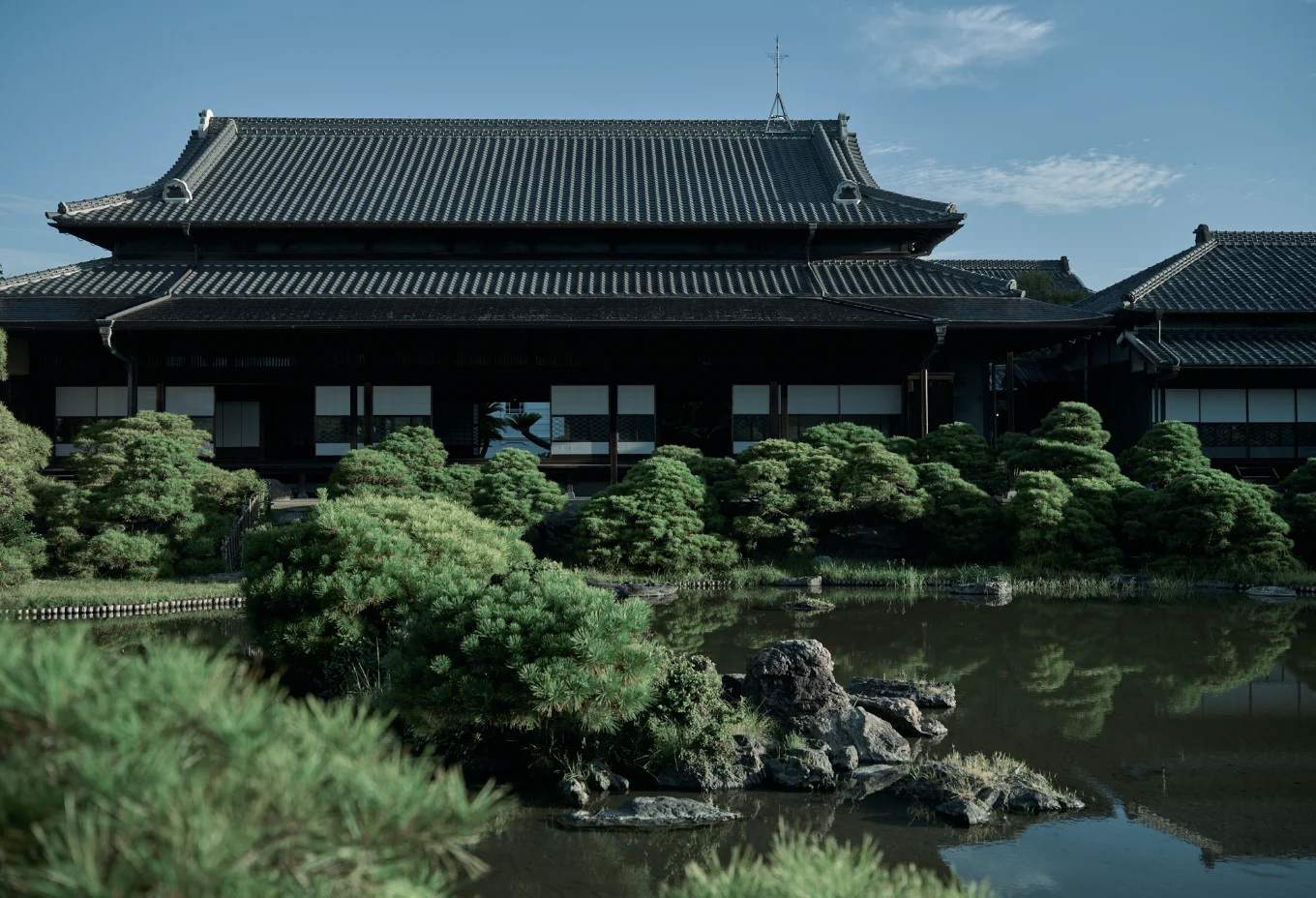All existing modern Japanese-style buildings in Ohana, which are cultural assets, were completed in 1910. The carefully crafted designs bear the weight of the 400-year history of the Tachibana clan, which rose from a family of feudal lords to a family of counts. Each design features the simple luxury and prestige typical of a samurai warrior family.

Shoto-en Garden
The Shoto-en Garden was developed through the persistence of the 14th generation Tachibana Tomoharu. As its name suggests, it is a pond garden surrounded by black pines, and is an ornamental garden where visitors can enjoy the view from the tatami room. The garden features a pond with large and small islands and rocks, and was designated as a national place of scenic beauty in 1978. In 2011, the entire Ohana site, including the Shoto-en Garden, was designated a national place of scenic beauty as the "Tachibana-shi Teien." It is said that the base of the old castle tower was moved to its current location to be used as the huge stone for the kutsunugi-ishi (flat top stone to set between the building and outside to put shoes on). In the winter, visitors can see flocks of wild ducks playing in the area.

Grand Hall
The large hall, approximately 162 square meters in size, is an open space unique to modern Japanese-style architecture, and has a status befitting a former feudal lord's family. The arrangement is such that the entire Shoto-en Garden can be viewed from every corner, revolving around the kutsunugi-ishi. The Shoto-en Garden, designed by the lord himself (Tachibana Tomoharu, the 14th head of the family), can be seen from the Grand Hall.

Seiyo-kan
This white western-style building was built as a guest house for the Tachibana clan. During the Meiji period, garden parties were held to welcome dignitaries. It has become a symbol of the atmosphere of Yanagawa, conveying the vestiges of the Meiji period to the present. It also had its own power plant at a time when electricity was not available, and used imported chandeliers and electrical fixtures. Even today, many of the lampshades and other furnishings are preserved as they were in those days.

Kasei-kyoku
Kasei-kyoku is the name of the household management office that was used to manage the count's property and other affairs. The Tachibana clan has utilized the building in different roles from generation to generation since the Meiji period, and most of the framework has been maintained as it was first built. It is very rare to find a kasei-kyoku that still exists today throughout Japan.

Tachibana Museum
This museum introduces the history and culture of the Tachibana clan over the past 400 years through arts and crafts inherited from members of the Tachibana clan of the Yanagawa domain, whose ancestor was the feudal warlord Tachibana Muneshige. Many of the items owned by former feudal lords were lost during the Meiji Restoration and the turmoil following World War II, and there are not many examples of collections that were maintained in a cohesive form to this day. The museum houses a collection of the Tachibana clan's handicrafts from the time when they were the feudal lords of the Yanagawa domain and modern-day counts. The approximately 30,000 historical items, including one national treasure and three important cultural properties, have been passed down from generation to generation over a period of more than 400 years since the birth of the Tachibana clan, a family of feudal lords in the early modern period.
Official website of the Tachibana Museum
